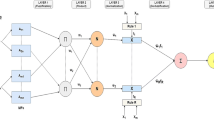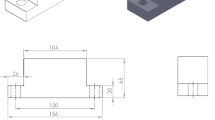Abstract
Amidst different conventional contact lens manufacturing techniques, single-point diamond turning (SPDT) is one of the recently developed ultra-high precision machining techniques employed in the fabrication of advanced contact lenses due to its capability of producing high optical surfaces of complex shapes and nanometric accuracy. SPDT is regarded as an effective process for the generation of high-quality functional surfaces in optical industries. However, despite advances in the ultra-high precision machining, it is not always easy to achieve a high-quality surface finish with maximum productivity. Machining parameters, namely cutting speed, feed rate, and depth of cut, play the lead role in determining the machine economics and quality of machining. The present study focuses on the determination of the optimum cutting conditions leading to minimum surface roughness as well as electrostatic charge and maximum productivity, in SPDT of the polymethyl methacrylate (PMMA) contact lens polymer using monocrystalline diamond cutting tool. The optimization is based on the response surface methodology (RSM) together with the desirability function approach. In addition, a mathematical model is developed for surface roughness (Ra), electrostatic charge (ESC), and material removal rate (MRR) using RSM regression analysis for a rigid contact lens polymer by the Design-Expert software. RSM allowed the optimization of the cutting conditions for minimal surface roughness, electrostatic charge, and maximal material removal rate which provides an effective knowledge base for process parameters, to make its enhancement of process performance in SPDT of contact lens polymer.
Similar content being viewed by others
References
Jiang Q, Zhang L, Pittolo M (2000) The dependence of surface finish of a spectacle polymer upon machining conditions, Progress of Machining Technology. Aviation Industry Press, Beijing, pp 7–12
Dusunceli N, Colak OU (2008) The effects of manufacturing techniques on viscoelastic and viscoplastic behavior of high density polyethylene (HDPE). Mater Des 29:1117–1124
Liman MM (2017) Diamond turning of contact lens polymers. Masters of Engineering, Mechatronics Engineering, Nelson Mandela Metropolitan University, Port Elizabeth
Olufayo OA (2014) Ultra-high precision manufacturing of contact lens polymer. PhD, Mechatronics Engineering, Nelson Mandela Metropolitan University, Port Elizabeth
Liman M M, Abou-El-Hossein K, Jumare A I, Odedeyi P B, Lukman A N (2017) Modelling of surface roughness in ultra-high precision turning of an RGP contact lens polymer, in Key engineering materials, pp 183–187
Kwok T-C (2011) An investigation of factors affecting surface generation in ultra-precision machining with fast tool servo. The Hong Kong Polytechnic University, Hong Kong
Reddy BS, Kumar JS, Reddy KVK (2009) Prediction of surface roughness in turning using adaptive neuro-fuzzy inference system. Jordan J Mech Indust Eng 3:252–259
Amran M, Salmah S, Hussein N, Izamshah R, Hadzley M, Kasim M et al (2013) Effects of machine parameters on surface roughness using response surface method in drilling process. Procedia Eng 68:24–29
Palanikumar K (2007) Modeling and analysis for surface roughness in machining glass fibre reinforced plastics using response surface methodology. Mater Des 28:2611–2618
Rajasekaran T, Palanikumar K, Vinayagam B (2011) Application of fuzzy logic for modeling surface roughness in turning CFRP composites using CBN tool. Prod Eng 5:191–199
Lou MS, Chen JC, Li CM (1998) Surface roughness prediction technique for CNC end-milling. J Ind Technol 15:1–6
Olufayo O, Abou-El-Hossein K, Kadernani M (2014) Tribo-electric charging in the ultra-high precision machining of contact lens polymers. Procedia Mater Sci 6:194–201
Ficker T, Kapička V, Macur J, Slavíček P, Benešovský P (2004) Fractality of electrostatic microdischarges on the surface of polymers. Acta Polytechnica. J Adv Eng 44
Gubbels GPH (2006) Diamond turning of glassy polymers, vol 68, Citeseer
Gubbels G, Van Der Beek G, Hoep A, Delbressine F, Van Halewijn H (2004) Diamond tool wear when cutting amorphous polymers. CIRP Ann Manuf Technol 53:447–450
Hossain SJ, Ahmad N (2012) Adaptive neuro-fuzzy inference system (ANFIS) based surface roughness prediction model for ball end milling operation. J Mech Eng Res 4:112–129
Cus F, Zuperl U (2009) Particle swarm intelligence based optimisation of high speed end-milling. Archives of Computational Materials Science and Surface Engineering 1:148–154
Aykut Ş (2011) Surface roughness prediction in machining castamide material using ANN. Acta Polytechnica Hungarica. J Appl Sci 8:21–32
Suresh P, Rao PV, Deshmukh S (2002) A genetic algorithmic approach for optimization of surface roughness prediction model. Int J Mach Tools Manuf 42:675–680
Van Luttervelt C, Childs T, Jawahir I, Klocke F, Venuvinod P, Altintas Y et al (1998) Present situation and future trends in modelling of machining operations progress report of the CIRP working group ‘modelling of machining operations’. CIRP Ann 47:587–626
Chabbi A, Yallese MA, Meddour I, Nouioua M, Mabrouki T, Girardin F (2017) Predictive modeling and multi-response optimization of technological parameters in turning of polyoxymethylene polymer (POM C) using RSM and desirability function. Measurement 95:99–115
Panda M, Biswal S, Sharma Y (2016) Experimental analysis on the effect of process parameters during CNC turning on nylon-6/6 using tungsten carbide tool. Int J Eng Sci Res Technol 5:2277–9655
Lazarević D, Madić M, Janković P, Lazarević A (2012) Surface roughness minimization of polyamide PA-6 turning by Taguchi method. J Prod Eng 15:29
Gaitonde V, Karnik S, Mata F, Davim JP (2010) Modeling and analysis of machinability characteristics in PA6 and PA66 GF30 polyamides through artificial neural network. J Thermoplast Compos Mater 23:313–336
Read ML (2010) The impact of material surface characteristics on the wetting properties of silicone hydrogel contact lenses. PhD Thesis, The University of Manchester
Goel B, Singh S, Sarepaka RGV (2016) Precision deterministic machining of polymethyl methacrylate by single-point diamond turning. Mater Manuf Process 31:1917–1926
Yu N, Fang F, Wu B, Zeng L, Cheng Y (2018) State of the art of intraocular lens manufacturing. Int J Adv Manuf Technol 98(1–28):1103–1130
Lagado C. (2018). Hard lens materials, PMMA (polymethyl methacrylate). Available: https://www.lagadocorp.co/en/products/hard-lens-materials/. Accessed Mar 30 2018
Otieno T (2018) The machinability of rapidly solidified aluminium alloy for optical mould inserts. PhD, Mechatronics Engineering, Nelson Mandela University, Port Elizabeth
Bombay I I o T (2017) Machine operation calculations, Indian Institute of Technology. Available: http://www.d.umn.edu/~rlindek1/ie1225/MACHCALC_1_doc.doc
Montana (2018) Turning equations. Available: http://www.montana.edu/jdavis/met314/documents/homework/Turning%20Examples.pdf. Accessed Jul 23 2018
Dasarathi (2017) CNC: material removal rate (MRR)—what is it? Available: https://www.cadem.com/single-post/cnc-milling-turning-material-removal-rate. Accessed Jan 05 2017
Bouzid L, Boutabba S, Yallese MA, Belhadi S, Girardin F (2014) Simultaneous optimization of surface roughness and material removal rate for turning of X20Cr13 stainless steel. Int J Adv Manuf Technol 74:879–891
Kolahan F, Khajavi A (2010) A statistical approach for predicting and optimizing depth of cut in AWJ machining for 6063-T6 Al alloy. Int J Mech Syst Sci Eng 2
Aultrin KJ, Anand MD (2016) Experimental investigations and prediction on MRR and SR of some non ferrous alloys in AWJM using ANFIS. Indian J Sci Technol 9:13
Bouzid L, Yallese MA, Chaoui K, Mabrouki T, Boulanouar L (2015) Mathematical modeling for turning on AISI 420 stainless steel using surface response methodology. Proc Inst Mech Eng B J Eng Manuf 229:45–61
Lakshminarayanan A, Balasubramanian V (2009) Comparison of RSM with ANN in predicting tensile strength of friction stir welded AA7039 aluminium alloy joints. Trans Nonferrous Metals Soc China 19:9–18
Ramesh S, Karunamoorthy L, Palanikumar K (2008) Surface roughness analysis in machining of titanium alloy. Mater Manuf Process 23:174–181
Palanikumar K, Karthikeyan R (2006) Optimal machining conditions for turning of particulate metal matrix composites using Taguchi and response surface methodologies. Mach Sci Technol 10:417–433
Neşeli S, Yaldız S, Türkeş E (2011) Optimization of tool geometry parameters for turning operations based on the response surface methodology. Measurement 44:580–587
Otieno T, Abou-El-Hossein K (2016) Effect of cutting parameters on tool wear in diamond turning of new optical aluminium grade. Chinese Optics, 2016, 9(5): 579–587.
Jumare AI, Abou-El-Hossein K, Goosen WE, Cheng Y-C, Abdulkadir LN, Odedeyi PB et al (2018) Prediction model for single-point diamond tool-tip wear during machining of optical grade silicon. Int J Adv Manuf Technol 98(1–11):2519–2529
Otieno T, Abou-El-Hossein K, Hsu W, Cheng Y, Mkoko Z (2015) Surface roughness when diamond turning RSA 905 optical aluminium. Optical Manufacturing and Testing XI Proc SPIE:957509
Benardos P, Vosniakos G-C (2003) Predicting surface roughness in machining: a review. Int J Mach Tools Manuf 43:833–844
Alao A (2007) Precision micro-scaled partial ductile mode machining of silicon. MSc thesis, International Islamic University, Malaysia
Alao A, Konneh M (2009) A response surface methodology based approach to machining processes: modelling and quality of the models. Int J Exp Des and Process Optim 1:240–261
Stat-Ease I M, USA (2008) Design-Expert ® Version 7.1.6 software, ed
Myers RH, Montgomery DC, Anderson-Cook CM (2016) Response surface methodology: process and product optimization using designed experiments. Wiley
Saedon J, Jaafar N, Jaafar R, Saad NH, Kasim MS (2014) Modeling and multi-response optimization on WEDM Ti6Al4V. In: Applied mechanics and materials, pp 123–129
Derringer G, Suich R (1980) Simultaneous optimization of several response variables. J Qual Technol 12:214–219
Harrington EC (1965) The desirability function. Ind Qual Control 21:494–498
Funding
We would like to acknowledge the support of the National Research Foundation (NRF) of South Africa and the Research Capacity Development, Nelson Mandela University for the financial support.
Author information
Authors and Affiliations
Corresponding author
Rights and permissions
About this article
Cite this article
Liman, M.M., Abou-El-Hossein, K. Modeling and multiresponse optimization of cutting parameters in SPDT of a rigid contact lens polymer using RSM and desirability function. Int J Adv Manuf Technol 102, 1443–1465 (2019). https://doi.org/10.1007/s00170-018-3169-1
Received:
Accepted:
Published:
Issue Date:
DOI: https://doi.org/10.1007/s00170-018-3169-1




